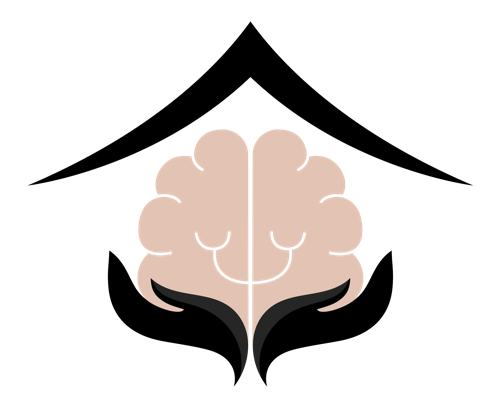If you’ve noticed recent changes in your child, such as difficulty focusing on studies or staying calm, they might have ADHD and you should know how to treat ADHD. Don’t worry, ADHD is not a mental illness. Your child is perfectly normal, they just have a different way their brain works.
ADHD is a neurological difference that falls under the concept of Neurodiversity. With this difference, individuals struggle with focusing on tasks, can become super hyperactive, and have trouble controlling their emotions.
It’s important to note that ADHD is not limited to children; it can be diagnosed at any age. Some adults discover they have ADHD during their teenage years. Studies show that about 4.4% of adults have ADHD, which can be treated but the question is how to treat ADHD for either adults or children.
Whether you’re a parent or a friend of someone with ADHD, you might be wondering how to treat ADHD. In this post, you’ll find all the answers to the questions swirling in your mind. So keep reading to learn more!
Understanding ADHD
ADHD is the most common form of neurodiversity. It affects how the brain functions, making it challenging for individuals to concentrate and perform tasks. These individuals are just as intelligent as others, but ADHD affects their ability to show it. Unfortunately, there is no cure for this neurological difference. It’s something that lasts a lifetime, but different practices help minimize the symptoms.
When individuals with ADHD learn how to treat ADHD and manage their symptoms, it becomes easier for them to concentrate and control their hyperactivity. ADHD impacts a person’s social life, studies, and daily tasks. Initially, parenting someone with ADHD may be challenging, but with the right strategies and accommodations you can know how to treat ADHD, and your child can have a better and less overwhelming life.
We have broken down these symptoms into three phases to help you understand them more clearly:
Hyperactivity and Impulsivity
This is when a person just can’t stay still! They’re always moving, fidgeting, and seeking sensory experiences. They also tend to talk a lot and interrupt others. It’s more common in kids, especially boys. Imagine a child who’s always on the move. They can’t sit still in class or even during meals. It’s like they have an itch they just can’t scratch! They also struggle with controlling their impulses, finding it hard to wait in line or do quiet activities. Patience is not their strong suit!
Difficulty Paying Attention
This is when someone has trouble focusing on tasks and paying attention. It’s like their mind keeps wandering off! They might make careless mistakes and find it hard to follow instructions with multiple steps. This type of ADHD is more common in grown-ups, especially in girls.
You must have noticed someone who has Inattentive ADHD trying to have a conversation. They struggle to keep up and appear bored or like they’re not fully there, but it’s not intentional. Their working memory, which helps them remember things, is a real challenge for them. They get easily distracted and often misplace things. Any task that requires a long attention span, like reading a book, listening to a lecture, or cooking a complex meal, can be tough for them. Staying organized is not their strong suit, and they tend to forget appointments quite often.
Seeking Professional Help
The severity of ADHD symptoms varies from person to person. Some folks may have it more intense, while others may experience milder symptoms. It’s all unique to each individual. But learning how to treat ADHD can help in many ways.
When you reach out to a professional for help, they’ve got plenty of ways to treat ADHD. It’s a smart move to get your child assessed and diagnosed. That way, you’ll know exactly what they’re dealing with and can working on making things better. Also, that diagnosis will bring a sense of relief. It shows that your child is on a journey to improve their education, daily life, and relationships.
The pro might suggest counseling or coaching for your child, and even involve your family and close friends in the process. They might also recommend reaching out to educators for some extra support. Just remember, you’re not alone in this journey. There are people out there who can lend a helping hand every step of the way.
Medication and Treatment
Talking to a professional about how to treat ADHD is the most suitable choice. Sometimes doctors may suggest giving your child some medicines to help them stay focused, reduce impulsivity, and manage their hyperactivity. These meds are called stimulants, like methylphenidate or amphetamines. But here’s the thing, you should only give them to your child if a doctor has prescribed them. Don’t go giving any meds without professional guidance because these medicines need to be taken under their supervision. They’ll know what’s best for your child, so always follow their advice.
Behavioral Therapy
Behavioral therapy is a real game-changer when it comes to knowing how to treat ADHD and managing ADHD symptoms in your child. It’s all about helping them come up with clever strategies, stay organized, and feel more comfortable socializing. Plus, there’s another approach called Cognitive Behavioral Therapy (CBT) that’s super useful. But it’s usually for adults and teenagers, not so much for young kids. With CBT, they’ll work on spotting those negative thoughts and swapping them out for positive ones. Therapists also suggest some other cool techniques, like social skills training and parenting training, to help you handle the challenges of raising your child.
Structure and Routine
If you’re an adult with ADHD or a parent of a child with ADHD here we have something important for you! Setting up a structured daily routine can make a world of difference in your child’s life. It’s all about creating a schedule that covers important stuff like mealtimes, sleep, work or study sessions, fun activities, and breaks. Also, breaking down their tasks into smaller, more manageable steps can make them easier to handle. Plus, don’t forget to use handy tools like calendars, planners, and reminder apps to keep your child super organized and on top of everything.
Exercise and Physical Activity
To help your child with ADHD and crack how to treat ADHD, regular exercise and physical activity is effective. It’s like a superpower that can work wonders! Get your child involved in simple activities like jogging, walking, dancing, or even joining a team sport. These awesome activities help reduce restlessness, boost their mood, and improve their focus. So, make it a part of their daily routine, you’ll be amazed at the positive changes you’ll see in your child.
Support and Education
Seeking help from professionals can be a game-changer for parents who want to understand their child’s unique brain functionality and figure out how to treat ADHD. But it’s also important for parents to team up with their child’s teachers too. Together, you can create effective strategies to support their learning journey. Remember, these kids are just as capable as others, they just need a little extra support and understanding to shine in their special way. It’s important to create an inclusive environment and provide them with the space they need to thrive.
The Bottom Line
Gaining effective insights about how to treat ADHD involves many things like taking medicine, going to therapy, making lifestyle changes, and creating an inclusive environment. It’s important to know that people with ADHD face challenges in their daily lives. Each person is unique, just like their brain. But with some effort, support, and understanding of how to treat ADHD, they can live a successful life and achieve their dreams. So, let’s work together to make their journey smoother and help them succeed!



